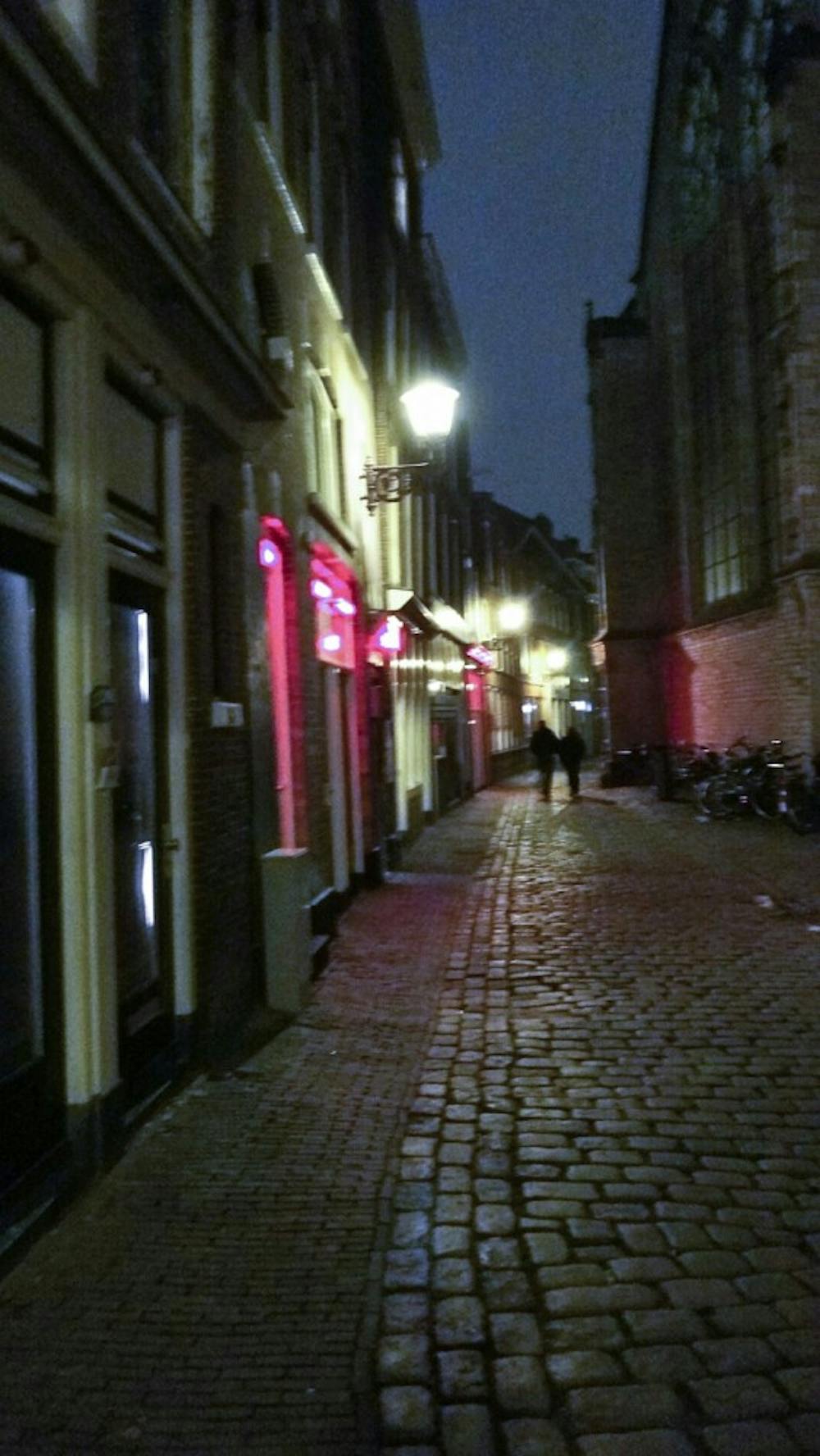AMSTERDAM — Mariska Majoor blends in perfectly with the rest of the pedestrians and bikers on Amsterdam’s crowded streets. She looks like a typical Dutch woman: Her dark hair is back in a ponytail and she wears simple jeans, sneakers and a huge knit
She also used to be a prostitute.
Majoor began “sex work,” as she calls it, at age 16. She wanted extra cash to buy a dog, so she began legally working as a prostitute in Amsterdam’s Red Light District and realized the nature of the work didn’t bother her. Soon enough, she had plenty of money to buy the pet German Shepherd she wanted.
After nearly 20 years working as a prostitute, she opened the Prostitution Information Center, or PIC, in Amsterdam to educate tourists — many of whom come from countries where prostitution is illegal and stigmatized — about what it is really like to work under a red light.
Majoor said she strongly believes prostitution should stay legalized in the Netherlands.
“When it’s legal, everything is more regulated,” she said.
Dutch sex workers must pay to lease their work spaces, which all come equipped with a “panic button” that will sound an alarm and alert police. They are selective about the clients they choose to let in. Majoor said she always preferred men who were non-aggressive and respectful. They have strict rules about what they are and are not willing to do and take necessary precautions to protect their sexual health.
“Sex workers are not stupid hookers,” Majoor said.
To help increase respect for sex workers, Majoor had a statue called “Belle” built in the middle of the Red Light District in Amsterdam. Belle is a half-naked woman who stands straight, with her shoulders back, chin up and hands on her hips. Majoor hopes that Belle’s strong stance will help diffuse the image of helpless, desperate prostitutes.
But not everyone in the Nether
lands shares Majoor’s liberal stance on prostitution — mainly because not all of the girls behind the windows really want to be there.
Saskia Wishart, a campaign coordinator at Not for Sale, a non-profit organization that helps trafficking victims recover and rebuild their lives, said she believes the line between voluntary and involuntary prostitution is blurry.
“There is a lot of gray area. There is a lot of exploitation,” she said. “I would hate to say, ‘this percentage is doing it by force, and this percentage is doing it by choice.’ Often, these women have rape, abuse, money problems and bad relationships in their histories.”
Many women who work as prostitutes in Amsterdam were brought into the country without a clear future. According to Wishart, a lot of women come to Amsterdam from Eastern Europe thinking prostitution is glamorous and others are seduced by “loverboys,” who are pimps that pose as wealthy boyfriends to recruit women into prostitution.
“Most girls who are trafficked had big dreams,” Wishart said. “One Romanian girl said that everyone in her town just got married and had babies, but she wanted an adventure.”
What Wishart and Majoor both have in common is their belief that sex workers deserve respect. While Majoor works to educate others about the benefits of legal, regulated prostitution, Wishart works directly with trafficking victims and current sex workers.
Similar to many social situations, Not for Sale finds that food works well to break the ice.
“We sell soup twice a week to Red Light girls, since they usually don’t get nutritious food,” Wishart said. “They can get charged four euros for Ramen noodles when they usually cost 80 euro cents, just because they’re prostitutes.”
The soup also helps Wishart and Not for Sale create relationships with sex workers and victims. Trafficking victims learn to readjust to normal life by helping to cook the soup at Not for Sale. And sex work- ers have made Wishart traditional soups from their home countries or invited her into their rooms to talk over the meal.
“I love hearing the girls tell me when they don’t like the soup,” Wishart says. “In their work, they never get to ask for what they want. I love hearing them say, ‘I don’t like this. Here’s how you can make it better.’”


